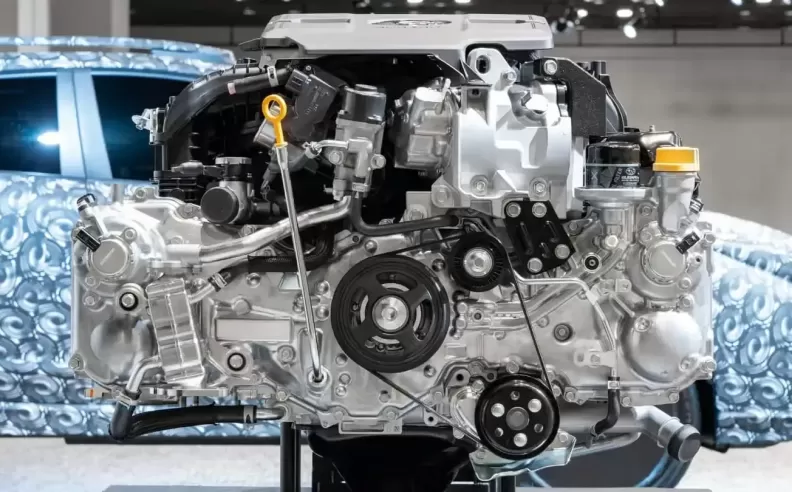
The automotive industry is in a transitional phase, with various manufacturers exploring different methods to reduce carbon emissions while preserving the driving dynamics and characteristics of internal combustion engines (ICE). In a recent joint conference, Toyota, Mazda, and Subaru discussed their innovative approaches to achieving decarbonization without fully committing to electric vehicles (EVs). Among these, Subaru's new hybrid boxer engine has garnered significant attention.

Subaru has unveiled a next-generation hybrid system that integrates its iconic horizontally opposed engine, also known as the boxer engine, into a modern hybrid powertrain. This advancement was showcased in a camouflaged Crosstrek prototype. Unlike the outgoing hybrid setup that utilizes a parallel system, the new series-parallel layout maintains a mechanical connection between the ICE and the wheels while allowing the combustion engine to act as a generator to charge a battery that powers an electric motor.
Benefits of the New System
The new hybrid setup brings several notable improvements: Fuel Economy: Subaru's new hybrid system aims to address the current weakness in fuel efficiency identified by Chief Technology Officer Tetsuo Fujinuki. By optimizing the engine's role and enhancing the hybrid system's efficiency, Subaru expects significant gains in fuel economy.
Packaging: The integration of the engine, hybrid system, transmission, and transfer case into a single unit is a major advancement. This compact arrangement allows the power control unit to be housed in the engine bay, freeing up space that was previously occupied by the rear-mounted unit in the old Crosstrek hybrid. Consequently, this enables the installation of a larger fuel tank, thus extending the vehicle's range.
Cruising Distance: Fujinuki emphasizes the "very long cruising distance" achievable with the new system. The nearly identical fuel tank size to the non-hybrid model ensures that hybrid versions of Subaru's vehicles won't compromise on range.
While Subaru is focused on refining its boxer engine within a hybrid framework, other automakers are also exploring diverse paths. Toyota is developing three new smaller and more efficient engines, while Mazda is reviving its rotary engine technology. Mazda's approach with the MX-30 involves using a rotary engine purely as a generator to charge the battery, which then powers an electric motor to drive the wheels. This method contrasts with Subaru's decision to maintain a mechanical link between the ICE and the wheels.
Production of Subaru's next-gen hybrid boxer engine is set to commence this fall at their Kitamoto factory in Saitama, Japan. This new hardware is designed primarily for all-wheel-drive applications, maintaining Subaru's commitment to its core engineering philosophy.
In addition to the hybrid developments, Subaru, Toyota, and Mazda are collaborating on carbon-neutral fuels. This initiative includes Subaru's participation in the Super Taikyu racing series with a WRX-based High Performance X Future Concept, underscoring the brand's commitment to performance and sustainability.
Subaru's new hybrid boxer engine represents a significant step forward in hybrid technology, marrying the brand's traditional engineering strengths with modern efficiency requirements. By improving fuel economy, optimizing packaging, and maintaining a robust driving range, Subaru is poised to offer a compelling alternative in the evolving landscape of eco-friendly automotive solutions. This innovation underscores Subaru's dedication to reducing emissions while preserving the unique driving experience that has long been a hallmark of its vehicles.

Wael is an automotive content writer specializes in creating written content for Motor 283. Producing a wide range of content, including blog posts, articles, product descriptions, reviews, and technical guides related to cars, trucks, motorcycles, and other vehicles, with an unprecedented passion for cars, and motorcycles.
